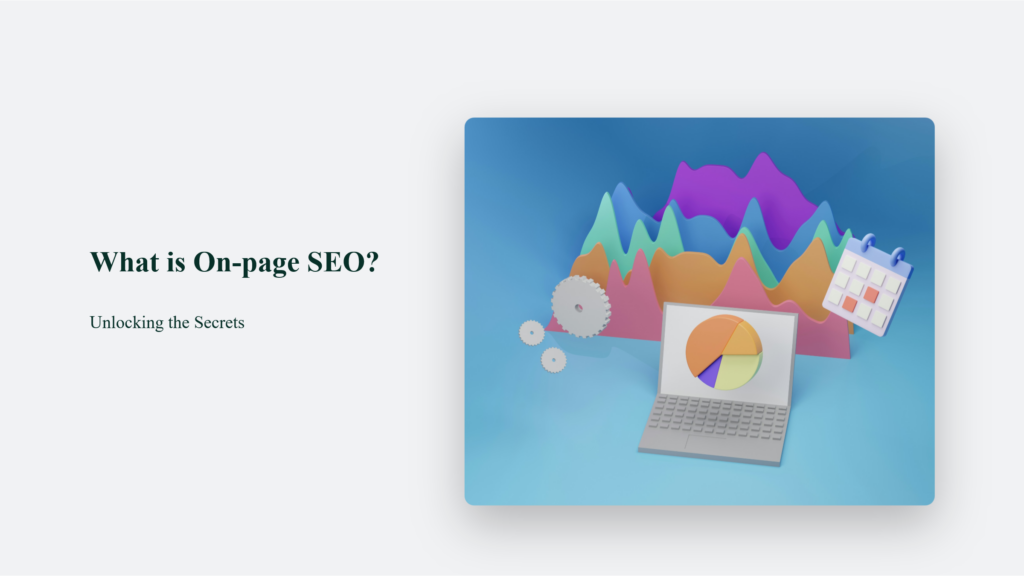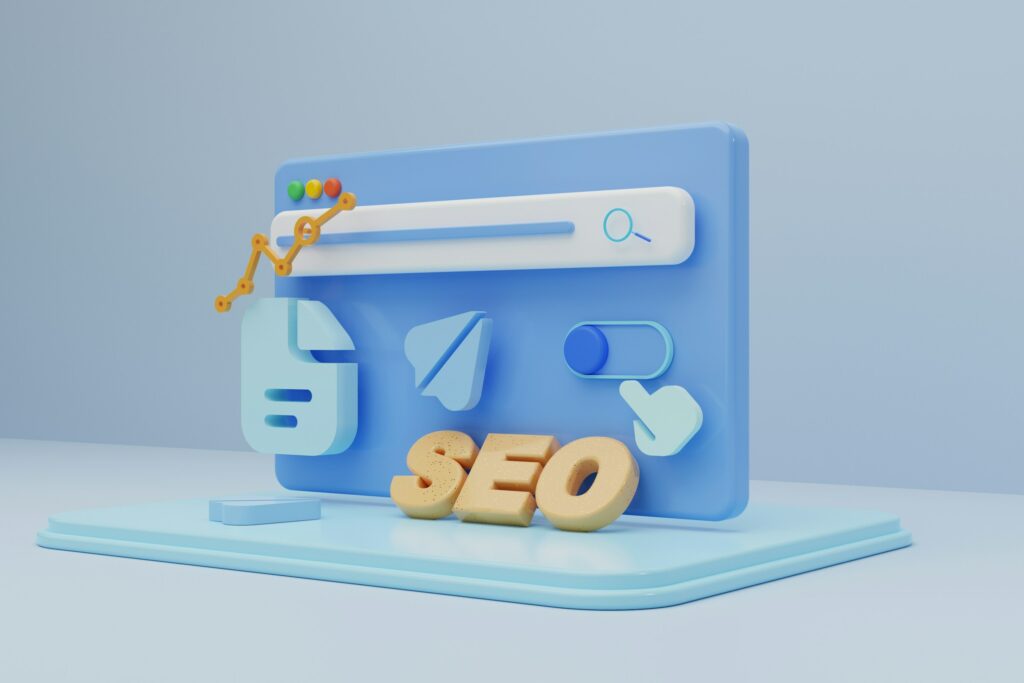In the ever-evolving world of digital marketing, mastering the art of on-page SEO is akin to holding a golden key to the vast kingdom of search engine rankings. When executed with precision, this intricate process can catapult your website from the shadows of obscurity to the spotlight of the first page on search engines. But what is on-page SEO, and why does it command such a pivotal role in the digital marketing arena?

What is On-Page SEO?
At its core, on-page SEO involves optimising individual web pages to rank higher and earn more relevant traffic in search engines. It’s a blend of both content and HTML source code of a page that can be optimised optimised, as opposed to off-page SEO, which refers to links and other external signals. It’s about making your website’s heartbeat in sync with the algorithms of search engines.
The Ingredients of Success: Keywords and Meta Tags
In the digital landscape, the quest for visibility and engagement often leads us to on-page SEO, a realm where keywords and meta tags reign supreme. These elements are not merely optimisation tools but the essence of the connection between your content and your audience. Understanding and mastering keywords and meta tags can significantly enhance your website’s presence in the search engine results pages (SERPs), making it a critical component of your digital strategy.
The Art of Keyword Integration
Keywords are the echoes of your audience’s needs and queries, the phrases they input into search engines in search of answers or solutions you can provide. The strategic placement of these keywords throughout your content, including titles, headings, and body text, is paramount. However, the challenge lies in integrating them seamlessly and naturally, ensuring that your content remains engaging and readable.
According to Semrush, on-page SEO is about optimising your web pages to improve visibility and user experience. While keywords are crucial, they must be woven into your content to enhance rather than detract from the user’s experience.
The Silent Heroes: Meta Tags
Meta tags, specifically the title and meta descriptions, are your initial interaction with your audience on the SERPs. They offer a snapshot of your page and why it’s relevant to the searcher’s query. A compelling title tag incorporating your primary keyword can significantly increase the likelihood of a user clicking through to your site. Backlinko emphasises the importance of optimising titles and descriptions to improve your site’s visibility and click-through rate. Crafting a meta description that briefly summarises your page’s content while enticing the reader can further enhance this effect.
Crafting a Compelling First Impression
The title tag and meta description are your opportunity to make a strong first impression. They should be clear, concise, and reflective of the content within your page. Including your primary keyword in both the title tag and meta description not only aids in SEO but also helps to align user expectations with the content of your page. Search Engine Journal highlights the significance of showing expertise, authoritativeness, and trustworthiness (EAT) through your content, starting with your meta tags.
The Importance of On-Page SEO
On-page SEO is more than just keywords and meta tags; it’s about creating a cohesive and user-friendly experience that caters to your audience and search engines. Ahrefs points out that on-page SEO helps Google and searchers better understand and digest your content. By optimising these elements, you’re not only improving your visibility in search results but also enhancing the overall quality and accessibility of your website.
The Power of Imagery in SEO
When we talk about on-page SEO, images are often overlooked. Yet, they hold immense power in conveying your message and engaging your audience. A well-chosen image can instantly communicate what your content is about and encourage visitors to delve deeper into your site.
Optimising Images for SEO
To harness the full potential of images for on-page SEO, you need to optimise them. Here’s how:
- Use Relevant Images: Choose images that are relevant to your content. This helps reinforce your message and make your content more appealing.
- Compress Your Images: Large image files slow down page loading times, harming your SEO. Use image compression tools to reduce file sizes without sacrificing quality.
- Incorporate Alt Text: Alt text is a description of an image that helps search engines understand its content. Including target keywords in your alt text can improve your image search rankings and overall SEO.
- Use Descriptive File Names: Instead of generic file names like “image1.jpg,” use descriptive file names that include your target keywords, such as “homemade-chocolate-chip-cookies.jpg.”
By optimising your images, you not only make your site more attractive but also more discoverable in image searches, which can drive additional traffic to your site.

Mastering the Art of Formatting
How you format your content is just as important as the content itself. Proper formatting makes your content scannable and digestible, essential in an age where users often skim through content.
Best Practices for Content Formatting
Here are some formatting tips to enhance the readability and SEO of your content:
Use Headings and Subheadings: Break your content into sections with clear headings and subheadings. It helps readers navigate your content and allows search engines to understand the structure of your page.
- Employ Short Paragraphs: Long blocks of text can be intimidating. Keep your paragraphs short to encourage reading and comprehension.
- Vary Sentence Lengths: Mix short and long sentences to create a rhythm in your writing that keeps readers engaged.
- Highlight Key Points: Use bold or italic text to emphasise important information. It draws the reader’s eye to the most critical parts of your content.
- Incorporate Bullet Points or Lists: Lists make information easier to consume and are more likely to be read than text in paragraph form.
By implementing these formatting strategies, you create a user-friendly experience that can lead to longer dwell times and lower bounce rates, both of which are positive signals to search engines.
Conclusion:
In the grand tapestry of digital marketing, on-page SEO is a thread that weaves through every aspect of your online presence. It combines science and art, requiring analytical precision and creative flair. By mastering on-page SEO, you’re not just optimising your website but opening doors to endless possibilities in the digital world.
Frequently Asked Questions:
How often should I update my on-page SEO?
On-page SEO is not a set-it-and-forget-it task. Regular updates are essential to staying in tune with algorithm changes and evolving user search behaviours. Aim for a comprehensive review every few months.
Can on-page SEO improve my site’s speed
Yes, part of on-page SEO involves optimizing your site’s performance, including its loading speed. Faster sites provide a better user experience and are favoured by search engines.
Is on-page SEO enough to rank my website?
While on-page SEO is crucial, it’s part of a broader SEO strategy that includes off-page SEO and technical SEO. For the best results, all elements should be optimized in harmony.




